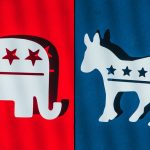Bipartisanship is a political approach where two opposing parties work together to create policies that satisfy both sides. In a bipartisan system, politicians from different parties cooperate through compromise and agreement to advance legislation rather than adhering strictly to party lines. This collaborative model is most commonly associated with two-party political systems, though the concept applies to any situation where opposing political factions find common ground.
The value of bipartisanship lies in its ability to produce more balanced policies that represent broader public interests. When Republicans and Democrats in the United States collaborate on bills, these measures often receive wider acceptance and greater longevity than partisan legislation. Bipartisan commissions and committees demonstrate this cooperative approach by including equal representation from major political parties.
Critics argue that true bipartisanship has become increasingly rare in modern politics. Polarization and party loyalty sometimes overshadow the goal of collaborative governance. Still, many voters and political analysts view bipartisan efforts positively, seeing them as a sign of functional democracy where different perspectives contribute to better public outcomes.
Defining Bipartisanship in Politics
Bipartisanship represents a fundamental approach to governance where political parties work together despite their differences. It serves as a mechanism for finding common ground on contentious issues while maintaining distinct party identities.
Concept of Partisanship
Partisanship forms the foundation of modern political systems, particularly in democracies with established party structures. It refers to strong allegiance to a specific political party and its ideological positions.
Political parties typically develop distinct platforms based on different values, priorities, and approaches to governance. These differences create natural divisions in how parties approach policy questions.
In the United States, the Republican and Democratic parties represent the primary partisan divide. Each maintains core constituencies and policy positions that often stand in opposition to one another.
Partisanship can be beneficial by offering voters clear choices and creating healthy competition of ideas. However, strong partisanship sometimes leads to gridlock when parties refuse to cooperate on even basic governance functions.
Distinction Between Bipartisanship and Nonpartisanship
Bipartisanship specifically involves two parties working together across political lines. It acknowledges party differences while seeking areas of agreement on particular issues or legislation.
Nonpartisanship, by contrast, attempts to remove party politics from decision-making entirely. This approach is often applied to civil service positions, judicial roles, and certain government agencies.
Bipartisan efforts produce compromises that incorporate elements from both parties’ priorities. Neither side gets everything they want, but both can claim partial victories.
Nonpartisan approaches aim for objectivity based on facts rather than political calculations. They work best for technical matters where political ideology adds little value.
Key Elements of Bipartisan Efforts
Successful bipartisanship requires recognition that cooperation serves a higher purpose than partisan advantage. This often happens during national crises or on issues with broad public support.
Communication channels between parties must remain open and functional. Regular dialogue between party leaders helps identify potential areas for cooperation.
Trust between political opponents forms another critical component. When representatives from different parties develop working relationships, finding middle ground becomes easier.
Bipartisan legislation typically involves give-and-take negotiations. Both sides must be willing to accept partial wins rather than holding out for perfect outcomes.
Public support often boosts bipartisan cooperation. When voters reward politicians for working across party lines, it creates incentives for more collaborative governance.
Bipartisanship in the U.S. Congress
Bipartisanship serves as a critical component of legislative function in the United States Congress. Despite increasing polarization, cooperation between the two major political parties continues to play a significant role in passing legislation and governing effectively.
Role of Members of Congress
Members of Congress balance representing their constituents’ interests with working across party lines. Representatives and senators often form relationships with colleagues from the opposite party to advance shared policy goals.
Party leadership can either encourage or discourage bipartisan behavior among their members. Some lawmakers specifically seek out cross-party partnerships to demonstrate their effectiveness to voters.
The committee system provides structured opportunities for bipartisan work. In committees, members from both parties review legislation, hold hearings, and make amendments before bills reach the floor.
Congressional caucuses also facilitate bipartisan cooperation on specific issues. Groups like the Problem Solvers Caucus (with equal Democratic and Republican membership) work to develop bipartisan solutions to pressing national challenges.
Bipartisan Collaboration and Co-Sponsorship
Co-sponsorship of bills represents a concrete form of bipartisan collaboration. When lawmakers from different parties jointly introduce legislation, it signals broader support and often increases chances of passage.
Research shows that bills with bipartisan co-sponsors advance further in the legislative process. According to studies, even during periods of high polarization, bipartisanship correlates with increased legislative effectiveness.
Some policy areas attract more bipartisan cooperation than others. Foreign policy, veterans’ affairs, and infrastructure typically see higher levels of cross-party collaboration than divisive issues like taxation or abortion.
Bipartisan working groups form to tackle complex problems requiring input from both parties. These informal structures allow lawmakers to collaborate outside the spotlight of committee hearings.
Party Line Voting
Party line voting occurs when legislators vote according to their party’s position rather than crossing the aisle. This behavior has increased in recent decades, limiting bipartisanship on floor votes.
Strong party discipline makes defections less common today than in previous eras. Party leaders use various tools to maintain voting cohesion, including committee assignments and campaign support.
Some votes consistently break party lines. Votes on regional issues or legislation with localized impacts often show geographic loyalty trumping partisan affiliation.
During national crises, party line voting sometimes decreases temporarily. Emergencies like natural disasters or security threats can prompt greater cooperation between parties.
Function of the Legislative Branch
The U.S. Constitution establishes Congress as the primary lawmaking body, with bipartisanship built into its design. The founders created a system requiring compromise and consensus to pass legislation.
Checks and balances between the majority and minority parties help prevent one-sided governance. The Senate’s filibuster rule, requiring 60 votes to advance most legislation, frequently necessitates bipartisan support.
Congressional oversight functions benefit from bipartisan participation. When both parties support investigations or hearings, the findings carry greater legitimacy with the public.
Budget and appropriations processes typically require bipartisan agreement to avoid government shutdowns. These “must-pass” bills often become vehicles for compromise between the parties on funding priorities.
The Importance of Bipartisanship in Governance
Bipartisanship serves as a fundamental pillar in democratic systems by fostering cooperation across political divides. It creates space for compromise that can lead to more durable policy solutions and helps maintain public faith in governmental institutions.
Impact on Democracy
Bipartisanship strengthens democratic systems by preventing policy oscillation when different parties take power. When laws pass with support from both major parties, they tend to endure longer and face less risk of immediate reversal following election cycles.
Democratic legitimacy increases when legislation reflects input from representatives across the political spectrum. This collaborative approach helps address complex national challenges that require long-term, stable solutions beyond a single party’s vision.
Functioning democracies depend on a balance between principled opposition and practical cooperation. Without some degree of bipartisanship, legislative gridlock becomes common, potentially leading to public frustration with democratic processes and institutions.
Research shows that bipartisan bills are often more comprehensive and effective because they incorporate diverse perspectives and undergo more thorough vetting.
Seeking Common Ground
Finding common ground requires identifying shared values despite differing political philosophies. Successful bipartisanship often begins with issues where overlap naturally exists, such as infrastructure, national security, or veterans’ affairs.
Effective bipartisan efforts typically involve compromise where neither side gets everything they want. This approach acknowledges that perfect solutions rarely exist and that progress often requires meeting halfway.
Political leaders who prioritize common ground frequently focus on problem-solving rather than ideological purity. They separate negotiable policy details from core values that cannot be compromised.
Building trust across party lines takes time and consistent good-faith engagement. Relationships between lawmakers from different parties create foundations for cooperation even during politically charged periods.
Influence on Public Opinion
When political leaders demonstrate bipartisan cooperation, public cynicism about government tends to decrease. Citizens gain confidence that their representatives can work together despite differences.
Media coverage of bipartisan achievements often highlights cooperation rather than conflict, which can help reduce polarization among the general public. This positive framing helps citizens see that compromise isn’t weakness.
Polling consistently shows that most American people prefer bipartisan solutions to partisan victories. This preference crosses party lines, with majorities of both Democrats and Republicans expressing support for compromise.
Bipartisanship signals to voters that their elected officials prioritize national interests above partisan advantage. This perception can improve overall trust in government institutions and democratic processes.
Challenges and Critiques of Bipartisanship
While bipartisanship is often viewed as a political ideal, it faces significant obstacles in contemporary politics and has drawn substantial criticism from various quarters.
Polarization and Partisan Conflict
Political polarization presents a fundamental challenge to bipartisanship in American politics. The ideological gap between Republicans and Democrats has widened dramatically over the past three decades.
This growing divide makes finding common ground increasingly difficult. Congressional voting patterns show that party-line votes have become more common, with fewer legislators willing to cross the aisle.
Media fragmentation has worsened this problem. Partisan news outlets and social media algorithms create information bubbles that reinforce existing beliefs rather than exposing people to diverse viewpoints.
Geographic sorting has also contributed to polarization. Americans increasingly live in communities that share their political values, reducing exposure to opposing viewpoints and making politicians less accountable to diverse constituencies.
Rise of Hyper-Partisanship
Hyper-partisanship has transformed the political landscape, with party loyalty often taking precedence over policy outcomes. Primary elections frequently reward candidates who demonstrate unwavering party loyalty rather than those willing to compromise.
Interest groups and political action committees often punish politicians who work across party lines. This creates strong disincentives for bipartisan cooperation, even on issues with broad public support.
The perception that bipartisanship equals weakness has gained traction in some political circles. As one search result notes, some Democrats argue that “bipartisanship is a failing strategy” and advocate for “a more action-based, confrontational strategy.”
Political bases increasingly demand ideological purity. Politicians who compromise risk facing primary challenges from more partisan candidates, creating a structural barrier to cross-party cooperation.
Bipartisanship in Foreign Policy and National Security
Foreign policy has traditionally been an area where bipartisanship persisted even during periods of domestic political division. The concept that “politics stops at the water’s edge” guided American foreign relations for much of the 20th century.
This consensus has fractured in recent years. Foreign policy and national security issues have become increasingly partisan, with deep divisions on trade, international agreements, and military interventions.
Despite growing partisanship, some bipartisan cooperation continues on certain national security issues. Intelligence oversight, military funding, and responses to immediate threats sometimes still generate cross-party support.
The debate about whether partisan competition or bipartisan consensus produces better foreign policy outcomes remains active. Critics argue that bipartisanship can lead to groupthink and inadequate scrutiny of major decisions.





